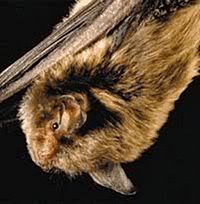(10 am. – promoted by ek hornbeck)
 Back in the middle of October I posted a piece entitled Save the Trees which you were all kind enough to elevate to the Rec List. It concerned the efforts of a local group to fight the powers that be in West Orange, NJ to prevent the destruction of the Governor George Brinton McClellan Estate Old-Growth Forest and Arboretum in order that Seton Hall Prep could build additional sports field and parking lots. This land is the only old-growth forest within the northern New Jersey metropolitan area which is unprotected and endangered.
Back in the middle of October I posted a piece entitled Save the Trees which you were all kind enough to elevate to the Rec List. It concerned the efforts of a local group to fight the powers that be in West Orange, NJ to prevent the destruction of the Governor George Brinton McClellan Estate Old-Growth Forest and Arboretum in order that Seton Hall Prep could build additional sports field and parking lots. This land is the only old-growth forest within the northern New Jersey metropolitan area which is unprotected and endangered.
You can read more of the background at the link above. Tonight, however, I wanted to provide an update on the situation.
The trees have won a temporary reprieve…as well as an endangered species of bat which may or may not be using some of them.
When we last left off, the next meeting was going to include testimony by an old-growth forest expert, Bob Leverett. That didn’t go so well:
At last week’s hearing we presented Bob Leveritt, from Massachusetts, a top old growth forest expert in the Eastern US. He is a published author, consultant to the US Forest Service and conducts symposiums at Harvard University on forests. He and Bruce Kershner were responsible for defining for all scientists, the characteristics of an Eastern Old Growth Forest.
He is a scholar and a gentleman.
The room was packed with students, residents and caring eco-protectors, who watched in disbelief and alarm as the West Orange Zoning Board treated him like….dirt.
They began by attempting to impugn his credentials, by asking him to identify exactly which words he wrote in his collaboration with Bruce Kershner in the Sierra Club Guide to Ancient Forests.
And it got worse from there.
Some board members twisted his comments about how rare this forest is, some interrupted him, they lectured him and they ridiculed him.
The quotes will be from reports provided by Sally Malanga and the folks at the St. Cloud Neighborhood Alliance.
 Anyway things weren’t looking all that good for awhile. even the discovery of possible wetlands on the tract of land by an environmental expert didn’t seem to be persuasive.
Anyway things weren’t looking all that good for awhile. even the discovery of possible wetlands on the tract of land by an environmental expert didn’t seem to be persuasive.
But then some folks started cobbling together some facts. Among the trees slated for destruction were eight shagbark hickory. Among other uses for these trees, they are ideal maternity roosts for bats, including the endangered Indiana bat.
 These bats live in caves all winter, called hibernacula. Well, guess what. There is a known hibernaculum near here, located in the Hibernia mine in Morris County, New Jersey.
These bats live in caves all winter, called hibernacula. Well, guess what. There is a known hibernaculum near here, located in the Hibernia mine in Morris County, New Jersey.
This iron mine was founded in 1722 and provided the Continental army with cannon, balls, and other items during the Revolution. It was abandoned in the early 20th century, and became a well-known bat hibernaculum.
Not only that, but we are in the midst of an immense bat die-off in New Jersey, due to white-nose syndrome, which is the invasion of a fungus which causes the bats to leave the hibernaculum in the middle of winter by mistake. As many as 95% of our bats have died. If you click on that link and look at the photo and read the caption, you would note that the dead bat in question is an Indiana bat.
The likelihood that Indiana bats use these particular shagbark hickories for maternity wards is not negligible.
So what follows is some of the report from the latest Zoning Board meeting.
The original core of activists were joined by the West Orange High School Fight for Green Club as well as Bergen Community College students and faculty. There is a message from one of those professors here: message from Cailin O’Connor Fitzpatrick, Bergen County Community College.
So what is the juicy outcome of last night’s hearing?
The bats!
Here is what happened.
It was tense as Carlo Popolizio in the uniform of the US Fish and Wildlife Service fended off The WO ZB’s and SHP’s typical rude attempts to discredit him.
He then told the WO Zoning Board in clear language that should they permit this project and should there be endangered Indiana Bats on the site, there would be criminal liability of the WO Zoning Board itself.
He cited Seton Hall Prep’s “woefully inadequate” Environmental Impact Statement as his reason for his involvement.
…
Carlo testified that the Indiana Bat is “entitled to life just like anything else in creation.” I felt like crying.
Seton Hall Prep’s attorney Bobby Williams finally agreed that his client would conduct the required testing this summer to determine if the bats use the Old Growth Forest as a maternity and roosting site.
–Sally Malanga
The trees…and the bats…have not yet been saved. WIll Seton Hall Prep do an honest environmental study? Their lack of trustworthiness was quite apparent in the past, when they started demolition without a permit.
Stay tuned.
Additional site: local Sierra club
I hope you don’t mind if I finish by reprising the poem and art from that previous diary.
 Garland
|

6 comments
Skip to comment form
…cuz’ it tells truth.
Author
…in Orange, as part of the DK Greenroots series.
and there. Well done, Robyn.
to us – they eat a hell of a lot of insects and create good fertilizer, disperse seeds, inter alia.
The ecostructure is dependant upon many threads acting in unison. Remove one and there will be a change in the earth’s patterns. Besides, as I’m an insomniac, I am enamored of little creatures who just fold up at night and sleep in a cave.